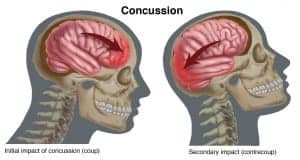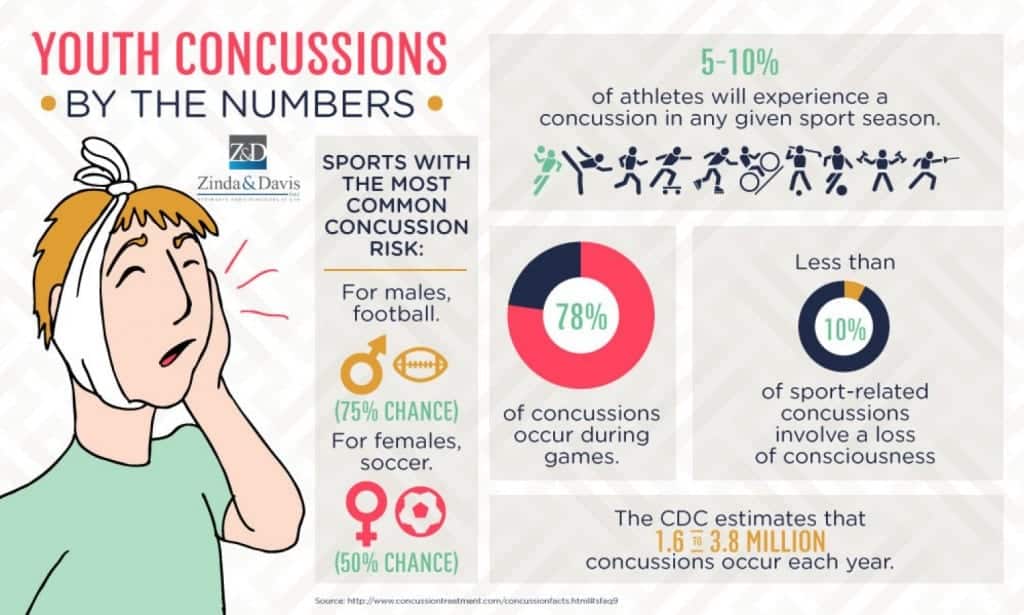 The Concussion Playbook
The Concussion PlaybookA concussion is traumatic brain injury caused when the brain is shaken inside the skull, which can cause damage to blood vessels in the brain or even injury to the brain tissue itself.
All it takes is a hard tumble on the basketball court or a blow to the head or the body. Yes, that’s right — you don’t necessarily have to hit your head. For example, when your body stops suddenly due to a hard tackle or a strong pick, it can cause whiplash and a concussion.
Some people think concussions only happen if you black out. But nine out of ten concussions don’t make you lose consciousness, and some only cause a brief interruption in mental alertness. Studies find that most high school and college athletes don’t report concussions while playing football. They might not realise that a concussion can happen even if you don’t black out.
In the past, athletes in many sports returned to play too soon after a concussion, sometimes even on the same day. But sports and health organizations are starting to take these injuries much more seriously. Trainers, health care professionals and athletes themselves are watching more closely for concussions and taking a more conservative approach to rehabilitation and return to play. This is an important change for the health of athletes everywhere.
If you’ve had a concussion, the first 10 days are crucial. During this time you are at the greatest risk for another concussion. Not only that, your risk of getting another concussion rises every time  you have one. If you can protect yourself in those first few days, you’ll have much better odds of a full recovery.
you have one. If you can protect yourself in those first few days, you’ll have much better odds of a full recovery.
But first, you need to know that you have a concussion. Effective concussion management starts with recognizing the signs and symptoms, some of which may show up hours or days after your injury. It is important for parents, coaches, trainers and athletes to recognize these early signs. They typically include:
Any athlete with potential concussion warning signs should see a physician as quickly as possible for a diagnosis. Remember, there is no simple test for a concussion. Many concussions can be missed if you rely only on a simple five-minute assessment done on the sidelines.
Athletes, coaches, parents and health care providers should all be up to date on concussions. If you are not comfortable dealing with a concussion yourself, have a concussion plan in place so you know exactly who to ask for help if someone shows warning signs.
Most people recover within a few days to three months. The Zurich Consensus statement on concussion recovery recommends the following five stages of rehabilitation:
At any stage, if you experience any recurring symptoms, restart the process and remain inactive until the symptoms stop.
Returning to play after concussion should occur only with medical clearance from a licenced health care provider trained in the evaluation and management of concussions.
In all cases it is important to have a healthcare team working together to get you back on the field safely with an eye on your long-term health.
A physician can provide a concussion diagnosis and manage and evaluate your condition in order to provide medical clearance.
Health care practitioners such as chiropractors can help you manage headaches or back and muscle pain you may have as a result of your concussion. It’s important to remember that your injury may have also injured your neck, shoulder or back. While you’re resting and recovering, these injuries might resolve on their own. If not, a chiropractor or a physiotherapist can help you recover and return to play. A full evaluation of your strength and physical function will help you know when your body is ready to get back into sports.
Concussion symptoms can vary widely from person to person: while one person might suffer from pain, another may have depression and trouble sleeping. Education, encouragement, and a commitment to getting you back to your daily activities as soon as it is safe and appropriate are some of the best known strategies to help overcome many of the negative outcomes of concussion. That takes a committed approach from the right health care team alongside family and friends.[/vc_column_text][/vc_column][/vc_row]